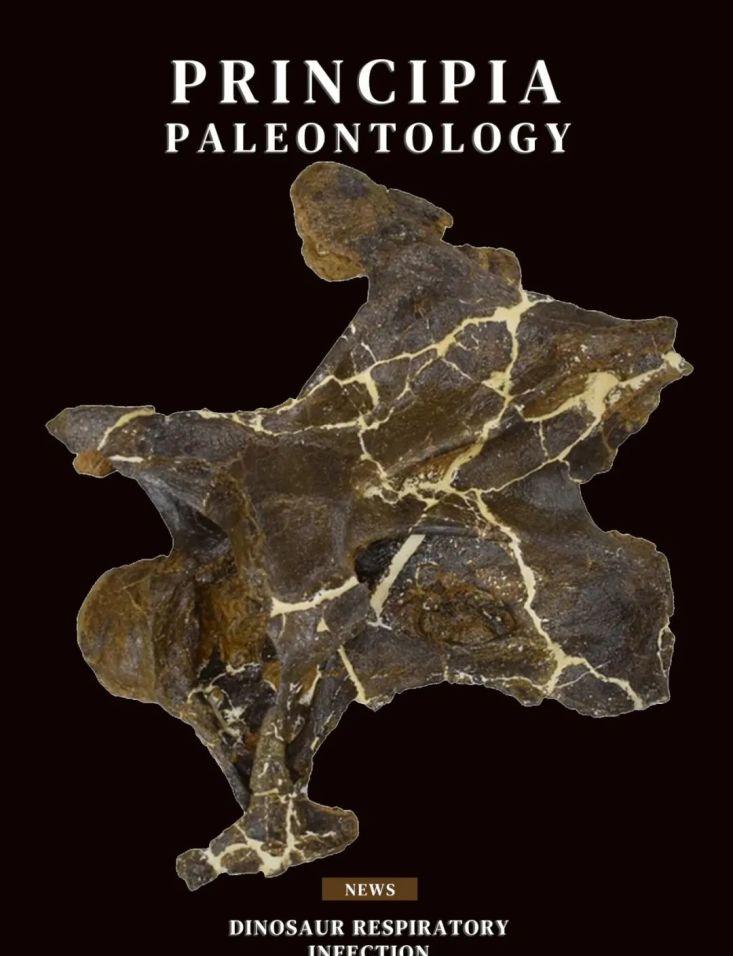
The prehistoric world also had diseases
Will The thunder dragon get bronchitis, and will the coelentosaurus catch a cold?
A new study suggests that dinosaurs may also have been susceptible to airborne infectious diseases. When the researchers examined the bones of a young Lepidianaurus nicknamed "Dolly," they found that even the largest animals that walked on Earth were not immune to respiratory diseases.
Fossils of this long-necked sauropod showed unusual lesions that were thought to be evidence of balloonitis, an inflammatory disease caused by an infection that still affects birds today.
Which diseases affected dinosaurs?
There are many different sources of what we know about dinosaurs. In addition to bones, preserved dinosaur footprints, feces, and even skin can be used to calculate what extinct animals looked like and how they might behave.
Scientists also draw on modern birds to make inferences because they are descendants of dinosaurs. The genetics, bones, and behavior of birds can give us some useful clues 66 million years after the extinction of their ancient relatives.
However, studies of the diseases that affected dinosaurs are more difficult to assess. Only in very rare cases can the internal organs be preserved in fossils. Therefore, only when the disease affects the bones can we have a chance to understand some of the diseases of the dinosaurs.
In 2020, fossil studies of Diplodocus suggested that dinosaurs were likely to develop bone cancer. This conclusion builds on previous findings that suggest that these animals can develop neoplasia or produce uncontrolled cell growth.
After that, a Brazilian Titan dragon found parasite fossils in its leg bones, which gave people a glimpse of how pathogenic organisms behaved during the Cretaceous period.
In 2021, a team of Brazilian scientists found preliminary evidence of some respiratory infections in a dragon that showed certain signs of pneumonia in the ribs of the dinosaur, which may have been caused by tuberculosis infection.
However, the structure of this part of the bone also has some similarities with the medullary bone. The medullary bone is a structure that female birds form when they are ready to lay their eggs. However, whether medullary bone existed in the dinosaur's body is still controversial, so it is difficult for researchers to know exactly how the dinosaur's physical condition was.
What symptoms do respiratory diseases cause?
In the new study, the fossil, called Dolly (number MOR 7029), comes from the famous Morrison Formation and dates back to the Late Jurassic, about 150 million years ago. The fossil consists of a skull and part of the neck.
Dolly's Life Recovery Map. | Image credit: Woodruff, et al. (2022) and Corbin Rainbolt
Although scientists are not yet sure what species Dolly is, it is believed to belong to the family Lepidoptera, which includes dinosaurs such as Lepidoptera, Confused Dragon, and Thunderosaurus. These dinosaurs are thought to have a respiratory system similar to that of modern birds, with air bags and hollow bones, which allowed them to absorb oxygen as they inhaled and exhaled.
When examining Dolly's vertebrae (the bones of the neck), the scientists noticed certain never-before-seen abnormal bone protrusions that were unusual in shape and texture. These suspected lesions do not appear to be related to the process of fossil formation, as the damage does not extend beyond these aerosive bone structures (these bone structures that communicate with the outside world).
Doley's cervical spine bone lesion location (red area) and close-up. | Image credit: Woodruff, et al.
After ct imaging of these sites, scientists believed that these abnormalities may have formed after infection. Because the bones show no signs of healing, they believe that the abnormal structure may be linked to chronic respiratory disease.
CT scan of dolly-infected vertebrae. (A) photograph of the infected vertebrae; (B) Scan the model with colored lines corresponding to the scanned slice below. White arrows represent obvious abnormal bone growth on the outside, while black arrows indicate irregularities on the inside. | Image credit: Woodruff, et al.
The researchers narrowed down the possible causes to three options, including neoplasia, balloonitis or pneumoconiosis, a disease caused by inhaling large amounts of dust or other particles.
Of these, they believe that balloonitis is the most likely cause. Because evidence of neoplasia is likely to extend beyond the structure of the gaseous bone, there is limited evidence of pneumoconiosis caused by events such as volcanic eruptions.
Fossils show that Dolly was young when he died, so infection may be the cause of his death.
Lianglong's complex lung structure and hypothetical infection pathway. For comparison, the height of the person is 1.7 meters. | Image credit: Woodruff, et al., and Francisco Bru én Alfaro
Although there is no way to confirm it, the team speculates that the disease may be caused by a serious fungal infection, similar to aspergillosis. Aspergillus bacteria usually grow in humid environments, which may be very suitable for the living environment of dinosaurs at that time. Currently, the oldest known Aspergillus spores date back about 50 million years, but this is 100 million years away from the time Dolly lived.
Diseases of dinosaurs
We've more or less experienced symptoms like this, like coughing, dyspnea, fever, and now we know that 150 million years ago, there was probably a dinosaur that suffered as much as we all did when we were sick.
In addition to confirming the existence of respiratory diseases, this specimen also helps paleontologists better understand how dinosaurs breathed, and the evolution of diseases that still affect animals today, and provides new options for fighting these diseases.
#创作团队:
Written by: M Ka
Typography: Wenwen
#参考来源:
https://www.nhm.ac.uk/discover/news/2022/february/fossils-suggest-dinosaurs-could-get-ill-from-respiratory-disease.html
https://www.eurekalert.org/news-releases/942650
https://www.sciencenews.org/article/dinosaur-lung-infection-fossils-oldest-case
#图片来源:
Cover image: Woodruff et al. (2022) and Corbin Rainbolt
首图:Woodruff et al. (2022)